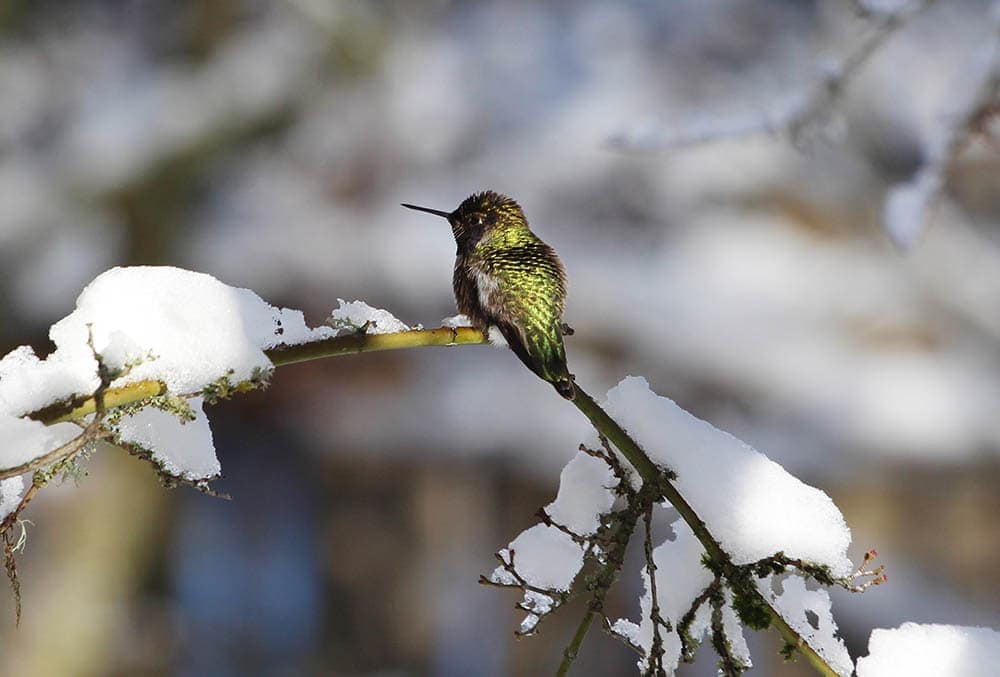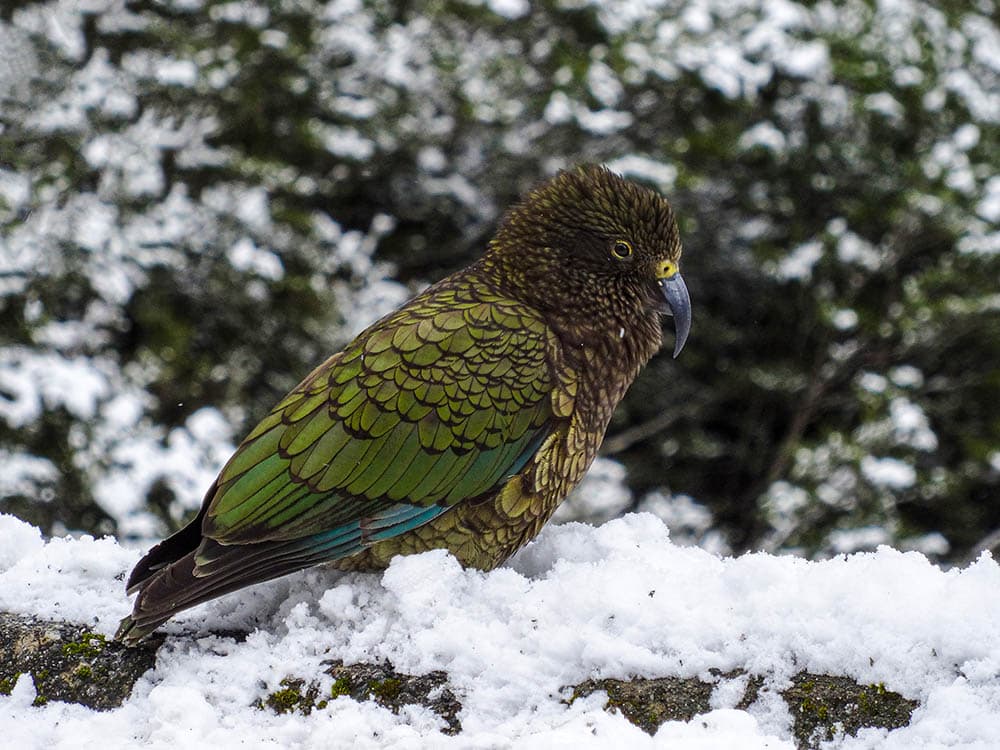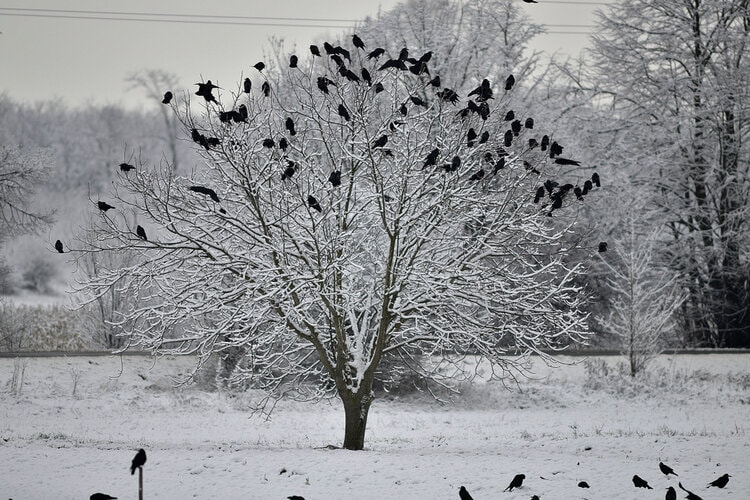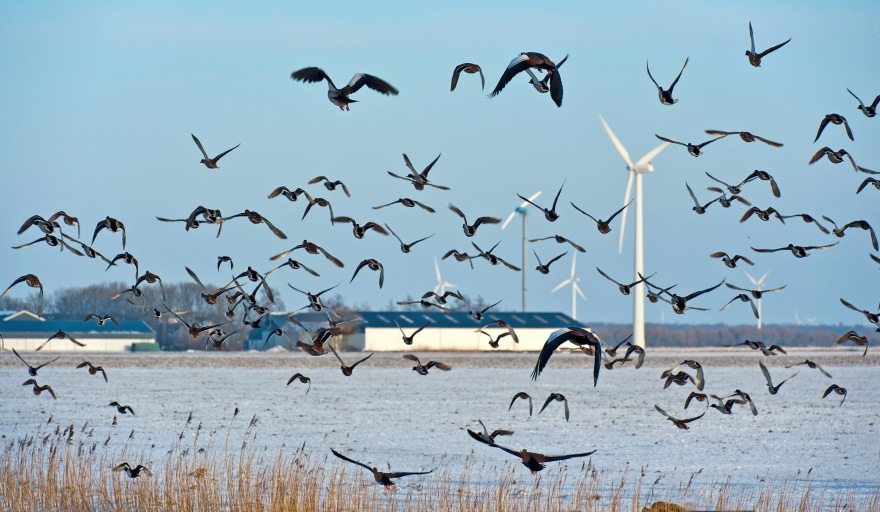How Do Birds Keep Warm and Survive The Winter?
Last Updated on

Charles Darwin said it best: “The only organisms that will remain standing, after it’s all been said and done, are those that figure out how to adapt to the gradual changes in their environment.” We’re certain that birds understand this all too well because they are highly adaptable creatures.
Look at toucans, for example. Who knew it was possible to use bills to thermoregulate intense heat1? And pelicans got so tired of fighting with other birds for food, that they started growing their own pouches to store more fish2. These adaptations are just but a few examples of the things that made us wonder—what other tricks do they have up their sleeves?
By now, we know you know that birds are warm-blooded creatures3. That means they don’t rely on external sources of energy to regulate their body temperatures and are not affected by the fluctuating temperatures of their immediate surroundings. Surviving the cold is not a problem for them, but food is always scarce during such times, and that’s why most of them migrate to warmer regions.
What about those that don’t? Do they get cold?
Well, those that don’t have evolved and developed a couple of physical and behavioral adaptations that will fascinate you. Let’s first look at the physical, before moving on to the behavioral stuff.
Physical Adaptations

1. Feathers
To be honest, nobody really knows why or how these fluffy appendages appeared. We do have several theories out there trying to explain their origin, but most of them are speculation.
Feathers are important to birds in more than one way. Some species use them for communication, especially if they are trying to look for the right mate to breed with, while others see them primarily as shields. Waterproofing and camouflage are the other not-so-common uses, but insulation is highly significant.
Feathers help birds regulate their body temperatures as it creates air pockets that trap warm air in, preventing it from escaping to the cold environment. If you’ve ever seen a bird tuck its bill into the feathers, it’s trying to inhale the warm air.
2. Legs and Feet
How is it that birds are able to walk in water or snow while it’s freezing outside, and not get their feet frozen? Something else that we found to be even more surprising is how some of them can comfortably sit on a metal perch during winter, and not get stuck. Even though the metal is literally freezing.
Sadly, it has nothing to do with superpower or magic. They just have feet with unique adaptations that make it possible to do that. Have you ever heard of the Latin phrase Rete Mirabile?
Its literal translation is “wonderful net.” Ornithologists like to use it while describing the pattern created by the arteries and veins supplying blood to the bird’s feet. Apparently, they are interwoven, to ensure that the warm arterial blood being pumping from the heart heats up the venous blood traveling back up from the legs. This guarantees that the blood from the feet doesn’t change the internal temperature of the body and that moving from the bird’s trunk doesn’t let the feet freeze.
Also, the veins directing blood to the feet have some sort of constriction, to ensure that only a small amount of blood goes down.
3. Fat Reserves
Most people assume that the freezing temperatures are the only problem that birds try to overcome during winter, but that’s not even the half of it. Elements such as strong winds and crazy storms also make it difficult to stay warm even if the temperatures aren’t that extreme.
Depending on the species, some birds end up consuming a significant percentage of their fat reserves in a single night—just to keep warm. By the time the storm has passed, you’ll find that they’ve lost at least 10% of their body weight.
Because stored body fat is the only thing that can help them survive those harsh weather elements, they always find themselves eating more during winter. More food equals more fat, which equals more energy.
Behavioral Adaptations

In addition to the physical traits, we have observable behaviors that different bird species have adapted to guarantee their survival. The ones that have been documented include:
1. Tucking
Tucking serves two purposes. One, it helps birds sleep better at night and stay warm. It’s almost the same thing that we humans do, whenever we feel cold. You’ll remove your gloves, exhale some warm air into your palms, and start rubbing. The only difference is, the birds are blowing the air into their feathers instead of palms.
They sometimes feel uncomfortable inhaling cold air and resort to withdrawing some of the previously blown warm air out of the pockets found within their feathers.
They’ll also tuck their legs and feet from time to time. It’s their way of protecting their lower body parts from frostbite should the temperatures keep dropping.
2. Shivering
This isn’t a new concept to anyone. We all know our bodies have ways of responding to cold, and shivering is one of them. It’s an automatic response that tightens and relaxes our muscles in quick succession to warm up. But unlike us, birds are able to do it consciously. They have a way of forcing themselves to shiver so that their metabolic rates go up. And as that happens, their internal body temperatures start rising until they get to a point that’s natural to them.
This isn’t something that they do all too often. Seeing as the process requires the consumption of too many calories, they only explore it as an option, if the temperature drops to extreme levels.

3. Torpor
Of all the adaptation behaviors that you’ll get to learn, this is the most common one. You don’t get to see some of these behaviors exhibited by all species, but this one is different. It’s all about hibernating so as to conserve the little energy left in their stores for rainy days.
In the state of torpor, the bird’s internal temperature will drastically drop, thereby slowing down its metabolic rate. And once that rate goes down, it won’t have to worry about the number of calories being consumed to release energy.
Unfortunately, though, there’s a downside to this. You see, even though they know they have to go into this state to survive the winter, they are also cognizant of the fact that it exposes them to potential danger. In the event of an attack, they’ll be too frail to respond.
Shivering is the only way to get out of torpor. That means they usually consume a lot of calories during that process and need to refuel as fast as possible.
4. Sunning
Taking advantage of the solar heat on the days that the sun comes out is another thing that birds do. If you’re keen enough, you’ll see them slightly raise their feathers, and then expose their backside. That’s because they are trying to make themselves bigger so the sun can hit a larger surface area.
5. Roosting
Roosting is common among species that prefer hanging out in flocks. Birds like titmice and bluebirds will crowd on a single perch at night so that they can share the heat coming out of their bodies.
6. Fluffing and Burrowing
Fluffing is when the bird spreads its wings and fluffs them out. This behavior helps them create some air pockets in between the feathers to insulate them more as the temperatures drop. Burrowing, on the other hand, is not quite as common but is mostly seen in birds like redpoll and snow buntings. If you’re lucky, you’ll find them burrowing in snow, trying to create caves that would insulate them at night.
You might also be interested in: Do Hummingbirds Hibernate? How Do Hummingbirds Survive Winter?

In Conclusion
You can always help these birds survive winter, if you’re in a position to. Offer them food and drinking water because most of their supplies are frozen. You could even go as far as building them a shelter, to shield them from all the harsh elements. Such acts of kindness have the potential of making our world a better place.
You might also be interested in: Do Owls Hibernate or Migrate? What You Need to Know!
Featured Image Credit: Sanlyn, Shutterstock
About the Author Robert Sparks
Robert’s obsession with all things optical started early in life, when his optician father would bring home prototypes for Robert to play with. Nowadays, Robert is dedicated to helping others find the right optics for their needs. His hobbies include astronomy, astrophysics, and model building. Originally from Newark, NJ, he resides in Santa Fe, New Mexico, where the nighttime skies are filled with glittering stars.
Related Articles:
Can You Use Binoculars to Look At Stars? How to Choose the Right Pair
10 Types of Hummingbirds in Arkansas (With Pictures)
8 Types of Hummingbirds in Nebraska (With Pictures)
5 Types of Hummingbirds in Idaho (With Pictures)
3 Types of Hummingbirds in Mississippi (With Pictures)
8 Types of Hummingbirds in Kansas (With Pictures)
5 Types of Hummingbirds in West Virginia (With Pictures)
5 Types of Hummingbirds in Ohio (With Pictures)
